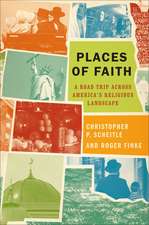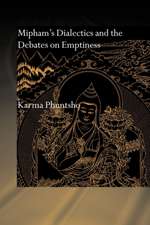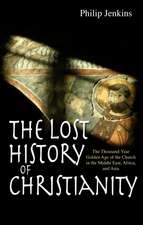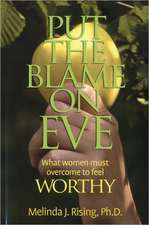Religious Transformations in the Early Modern World: A Brief History with Documents: Bedford Series in History & Culture (Paperback)
Autor Merry E. Professor Wiesner-Hanksen Limba Engleză Paperback – 31 dec 2008
Din seria Bedford Series in History & Culture (Paperback)
-
 Preț: 219.00 lei
Preț: 219.00 lei - 31%
 Preț: 246.18 lei
Preț: 246.18 lei - 32%
 Preț: 219.20 lei
Preț: 219.20 lei -
 Preț: 216.80 lei
Preț: 216.80 lei - 32%
 Preț: 235.03 lei
Preț: 235.03 lei - 32%
 Preț: 223.79 lei
Preț: 223.79 lei - 33%
 Preț: 228.05 lei
Preț: 228.05 lei - 33%
 Preț: 216.80 lei
Preț: 216.80 lei - 33%
 Preț: 222.88 lei
Preț: 222.88 lei - 33%
 Preț: 216.25 lei
Preț: 216.25 lei - 32%
 Preț: 235.03 lei
Preț: 235.03 lei - 32%
 Preț: 223.79 lei
Preț: 223.79 lei -
 Preț: 222.68 lei
Preț: 222.68 lei -
 Preț: 211.35 lei
Preț: 211.35 lei -
 Preț: 137.47 lei
Preț: 137.47 lei -
 Preț: 207.89 lei
Preț: 207.89 lei -
 Preț: 207.89 lei
Preț: 207.89 lei -
 Preț: 209.62 lei
Preț: 209.62 lei -
 Preț: 207.71 lei
Preț: 207.71 lei - 32%
 Preț: 235.03 lei
Preț: 235.03 lei - 33%
 Preț: 217.46 lei
Preț: 217.46 lei - 31%
 Preț: 160.87 lei
Preț: 160.87 lei - 33%
 Preț: 223.36 lei
Preț: 223.36 lei -
 Preț: 198.58 lei
Preț: 198.58 lei
Preț: 216.80 lei
Preț vechi: 322.32 lei
-33% Nou
41.48€ • 43.31$ • 34.33£
Carte disponibilă
Livrare economică 14-28 martie
Specificații
ISBN-10: 031245886X
Pagini: 185
Dimensiuni: 137 x 203 x 10 mm
Greutate: 0.2 kg
Editura: BEDFORD BOOKS
Seria Bedford Series in History & Culture (Paperback)
Locul publicării:New York, United States
Descriere
Cuprins
- Mesoamerica: Mexica Innovations and Mexican Catholicism
1. Gods of Life and Death from the Codex Borgia, c. 1500
2. Hymn to Huitzilopochtli from the Codices Matritenses, c. 1550
3. Mexica War Songs, 1560s
4. Diego Durán, The History of the Indies of New Spain, c. 1580
5. Chimalpahin, Annals, 1613
6. Bernardino de Sahagún, Sermons, 1540
7. Bernardino de Sahagún, Christian Psalmody, 1583
8. Andres de Olmos (?), Final Judgment, 1530s
9. Chimalpahin, Annals, 1613
- Europe: Reforms and Reformations in Christianity
10. Desiderius Erasmus, The Praise of Folly, 1511
11. Martin Luther, The Freedom of a Christian, 1520
12. Martin Luther, A sermon on marriage, 1525
13. Matthias Gerung, Protestant woodcut, 1546
14. Ignatius Loyola, Spiritual Exercises, 1520s
15. Teresa of Avila, The Way of Perfection, 1565
16. Pope Pius IV, Injunctum nobis, 1564
17. John Calvin, Institutes of the Christian Religion, 1536
18. John Calvin, Ordinances for the Regulation of Churches, 1547
- Africa and Southwest Asia: Politics and Mysticism in Islam and Judaism
19. The Replies of Muhammad Al-Maghili to the Questions of Askia al-Hajj Muhammad, 1498
20. Letters Between Sultan Selim I and Shah Isma’il, 1514
21. Mystical dance of a Sufi brotherhood, sixteenth century
22. Abdulwahhab b. Ahmad al-Sharani, Qualities of a Sufi saint, c. 1560
23. Katib Chelebi, The Balance of Truth, 1656
24. Moses Cordovero, The Palmtree of Deborah, 1560s
25. Isaac Luria, Bringing Forth Sparks, 1570
26. The Pious Customs of Abraham Galante, 1580s
- South Asia: Syncretism and Sikhism in the Mughal Empire
27. Abu’l Fazl, Akbarnama, c. 1590
28. ‘Abd ul-Qadir Bada’uni, Selected Histories, c. 1590
29. Nan Singh, Scholars Gather at Akbar’s Court, 1605
30. Muhsi-i-Fani, School of Religion, c. 1650
31. The Japji Sahib from the Guru Granth
32. Hymns of Guru Amar Das, 1560s
33. Sikh texts for a wedding, 1560s
- East Asia: Combining and Competing Traditions in China and Japan
Recenzii
'This collection is a wonderfully innovative tool for teaching religion in early modern world history. The introduction offers just enough context to help students make sense of the selections. The best thing about this text is that it may gently provoke students to think very differently about the historicity of religious traditions. They've never been static, and many aren't that old. This book is sure to win converts!' - Kris Lane, College of William& Mary, USA
Notă biografică
Caracteristici
Presents documents from different regions and different religious and philosophical traditions, including Islam, Judaism, Sikhism, Christianity, and Confucianism
A general introduction introduces the framework for examining the chapter case studies, while the chapters provide context, a group of primary sources, and a set of questions to consider
Useful pedagogic supports include headnotes to the documents, a chronology, a set of broader questions to consider that help students compare transformations and a selected bibliography













